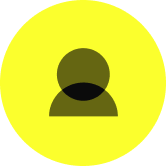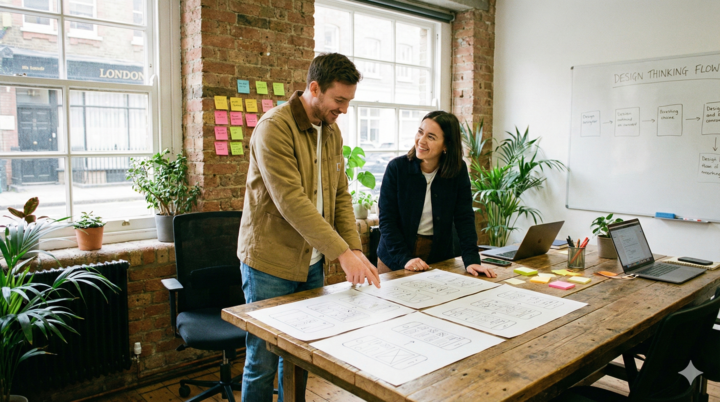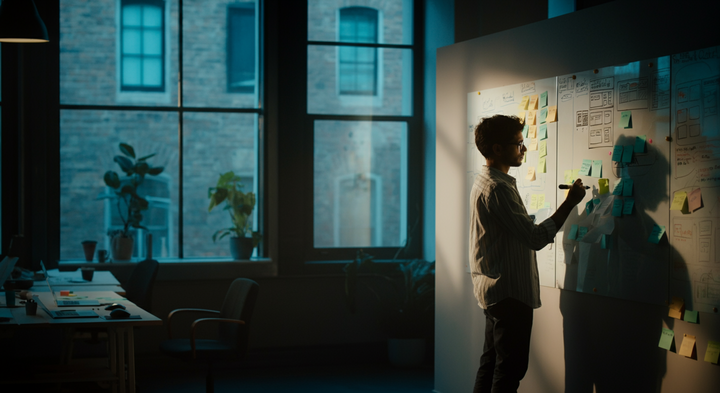A Conversation About Design: UX/UI Design within the Media Industry (Part Two)
Experience Haus Creative Director and Founder Amit Patel recently sat down with Kojo Boteng, a multifaceted and award-winning designer and educator currently working as Creative Director at PBS NewsHour on our podcast ‘A Conversation About Design.’
There was so much ground covered in this conversation that we had to split the write-up into two different articles! Here is part two…
Are there any particular experiences or milestones or projects that stand out to you that you look back on and are super proud to have been part of, or feel have shaped you in any way?
When I think about what a successful project looks like, I tend to think about projects where I’ve kind of made a leap or I’ve grown in some way. There have been a few in my time in news that were really great.
I had been at ITN for a few years and worked with the production arm that would essentially hire themselves out as an agency helping news organisations around the world set up their own rolling news channels. So this is something a lot of people don’t know but I designed the first English speaking 24 hour news network in India! I designed all the graphics and all of the packaging. They were called Headlines Today, and formed part of the Today group. I spent about a month in Delhi working with Indian designers and that was an amazing experience.
Another notable project was the relaunch of News at 10 on ITV. The opening titles were done by a moving picture company but everything else in terms of content and branding was solely done by me!
You’ve seen lots of different technologies and approaches in your career. Where do you see certain digital technologies shaping the future of the space that you’re working in?
Technology is an interesting one because I’ve seen so much! When I started, we were doing paste up – this involved cutting out dry transfer letters for your headlines and mocking those up ready for a kind of pre press. Since then I’ve used things like Quantel Paintbox when I first started in television, then came Photoshop, After Effects and more! I’m now at the point where I don’t want to learn any more tools! I think the core for me, and I’m still doing it now, the core tool for me actually is a pen and pad, just in terms of getting your ideas down and then finding the right tools for the job.
The big thing at the moment is the introduction of AI technologies. It’s an interesting moment where things that even on the Paintbox or in Photoshop that I had to do manually, the idea of just having to press a button to remove a background, but then also being able to extend imagery and do all kinds of stuff is just mind blowing. Nevertheless, what I will say is that I don’t think AI is always going to be a good idea. I’m actually really interested in analog stuff, stuff that can’t come out of machine printmaking and all of those kinds of things, which has a bit more of a texture to it or something that has feeling. I think that’s the problem with the AI stuff, it looks like plastic most of the time – it doesn’t really have much of a soul.
You’re an adjunct professor at the NYU Tandon School of Engineering teaching UX. What are some of the areas you have found challenging to deliver to students or have enjoyed delivering to students?
My journey in teaching actually started when I moved to Washington. I met the chair at Maryland Institute College of Art (MICA) in Baltimore. So I taught a couple classes there, but then the pandemic happened and then we kind of shifted to the half the semester online and then commuting to Baltimore once the pandemic was over just wasn’t going to work. Then one of my friends who teaches at NYU asked if I wanted to teach a class. As we were still in the pandemic, what I found really challenging at the time was just teaching remotely! In these types of classes you have sticky notes, you can put things on the wall, you can see what people are doing. The whole point of user experience is about people connecting and to have a technology separate you, it just made everything a little bit more challenging, even in terms of how the students interacted with me! Some people just wouldn’t turn their cameras on so I didn’t even know what all my students looked like!
What was good, however, was the amount of access students had to me. Whenever I set them homework, I’d let them know if they had questions, they could message me on Slack and I would respond pretty quickly. I’m also having to change my own style in order to make all students feel comfortable. I’m 6 foot 2 and have a deep voice so to young students just starting out, this can feel quite intimidating. You learn to adapt to the students’ needs. This is actually helping me to grow, not just as a creative director, but as a human being as well, connecting with different folks from different places and learning from them. I think that’s one of the more rewarding things about giving back in that way.
How long has Create Community been running? What are you trying to accomplish with it?
Create was an idea I came up with when I first got to DC. In London there were plenty of meetup opportunities where you’d go meet new people, network, have some drinks and it was just a very relaxed atmosphere. In DC these meetups were very transactional. I’d meet someone who told me what he did, asked me what I did, gave me his business card and walked off. There was no further conversation. So coming from London where it’s a lot more diverse and it can be a little bit more hip, I wanted to create an event which was around design and creativity, but then that was a little bit social. The other thing I’ll add is that I also use it as a vehicle to meet more people because I didn’t know a lot of people at that time!
I had previous experience with event planning so I figured that I could use those skills that I learned to create my own thing. So Create essentially is just an opportunity for people to come together. It’s a speaker series (but soon to be a podcast!) where I’m interacting with like-minded people, and learning about their process and their design work, their history, all of that kind of stuff, and sharing it with people. And it’s not just about design! I know people from all over: DJs, producers, artists, graphic designers, furniture makers, curators. I want to create a space where all of these creatives can connect and talk and we can learn about their work.
What does 2024 look like for you? Are there any particular challenges that you’re taking on or anything that you’re looking to achieve this year?
I don’t normally make resolutions, but instead have a phrase or mantra that will carry me through the year, and this year the two topics that keep coming up are freedom and connectivity. At the moment most of my year is pretty much mapped out, which is kind of problematic for me because it doesn’t really leave much room for growth. But one of the things I want to be doing is drawing more. So for Christmas, my family bought me an amazing art set with watercolours, pencils and lots of art materials so I could focus a bit more on creating art.
I also want to launch my own podcast this year which is nearly ready to go. I also realised that although I read a lot of articles, I don’t actually read books, so that is something I’m going to aim to do more of. In conclusion, I’m thinking about ways in which I can switch off from the day-to-day stuff and do other creative endeavours that will hopefully fuel the work that I’m doing day-to-day.
This article forms part of a discussion conducted between Kojo Boteng and Experience Haus Creative Director, Amit Patel on the Experience Haus podcast, ‘A Conversation About Design’. In this podcast, we explore the fascinating world of design featuring insightful conversations with some of the brightest minds and inspiring individuals who are making waves in the industry.
Listen to the full interview with Kojo here.




